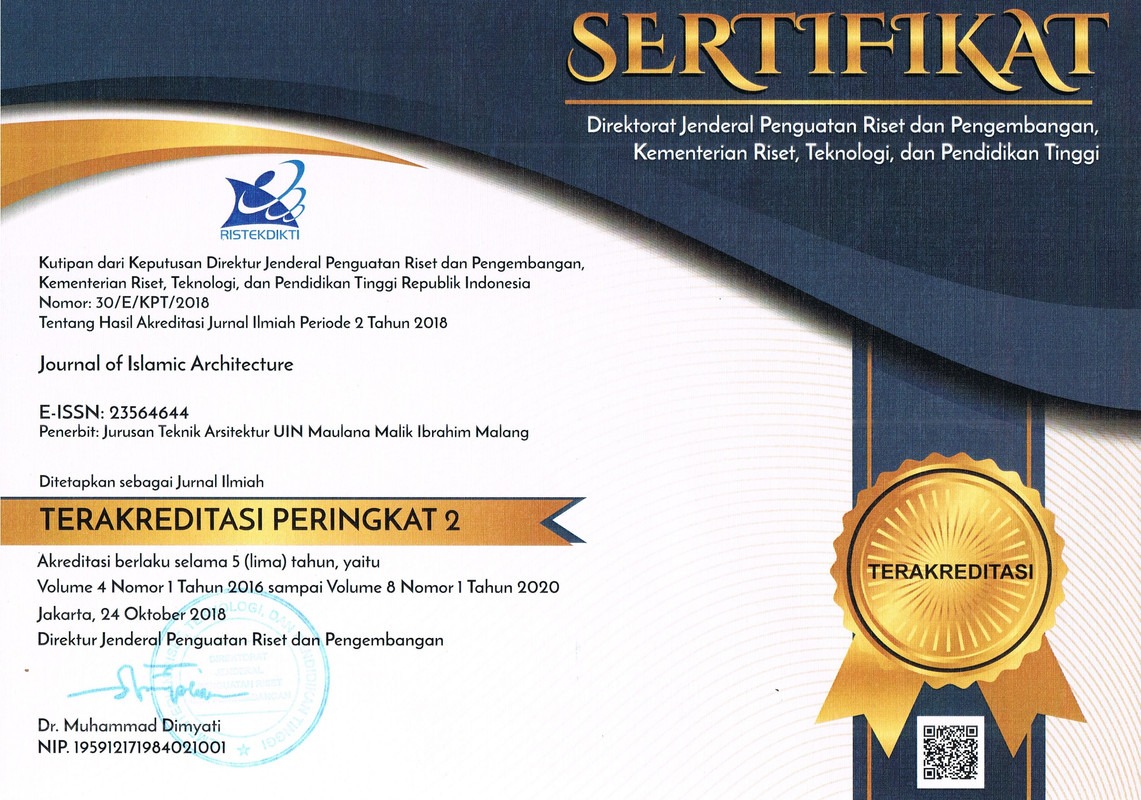The Negative Effects of the Separation Wall on the Architectural and Urban Heritage of Al-Quds
Abstract
The destruction of archaeological sites leads to big loss at the local and regional levels and any interruption to the past will have a negative impact on the present and the future. The preservation and protection of archaeological sites consists an economic, cultural and heritage impact for the nations. This study aims mainly to review the factors threating the destruction of archeological sites with an attempt to find the methods that reduce the threat and preserve what is left of the Palestinian remains. In additions, it includes an analytical study of the direct and indirect of the separation wall on the archeological sites in Al-Quds (Al-Quds 2020). The most important of these threats to the architectural heritage is the danger of the separation wall (The Al-Quds envelope). The study recommended the need for intensified efforts by concerned Palestinian authorities and institutions, especially the Ministry of Tourism and Antiquities to face the wall and its negative effects on archaeological sites on one hand and to put the protection and preservation of archaeological sites within their priorities on the one hand. Others, because of the economic and cultural importance of these sites, which affect the identity of the architecture.
Keywords
Full Text:
PDFReferences
Information Report: The Separation Wall in Jerusalem. Al-Quds International Foundation, 2016.
A. Bakr, The Separation Barrier, Motives and Impacts. 2008.
A. Abu Amer, Wall of Expansion and Apartheid around Al-Quds, Path, Effects and Attitudes: Specialized Al-Quds Knowledge Course. Gaza: Al-Quds International Foundation, unpublish, 2011.
The Reality of the Annexation Wall. Palestinian National Information Center, 2008.
“Israel and the Occupied Palestinian Territories.” [Online]. Available: https://www.amnesty.org/en/countries/middle-east-and-north-africa/israel-and-occupied-palestinian-territories/report-israel-and-occupied-palestinian-territories/.
S. Mind, The Separation Barrier. 2006.
The Wall of Apartheid Its Reality, Risks, and Challenges, Al-Bireh, Palestine. Al-Buraq Center for Research, Studies and Culture, 2003.
Resistance to Settlement. Executive Committee of the Palestine Liberation Organization, 2006.
The route of the Wall in Al-Quds adds territory to Jewish neighborhoods, Gaza, Palestine. The Arab Center for Research and Studies, 2006.
The Impact of Various Urban Activities on the Use of Land and Communities in the West Bank. Bethlehem: Applied Research Institute, 2005.
E. Khader, The Wall Draws the Al-Quds Borders. 2007.
Palestinian Central Bureau of Statistics. 2000.
Palestinian Central Bureau of Statistics. 2003.
Palestinian Central Bureau of Statistics. 2007.
A. D. Al-Bitar, Israeli Plans to Judaize Al-Quds and the Negative Effects of the Al-Quds 2000 Plan and the Wall of Apartheid. Al-Quds Open University, 2013.
R. Al-Hadari, the Impact of the Separation Wall on History and Landscape. Palestinian Foundation to study the cultural landscape, 2004.
T. Hamdan, Department of Antiquities. Ramallah, 2007.
DOI: https://doi.org/10.18860/jia.v4i4.4392
Refbacks
- There are currently no refbacks.






